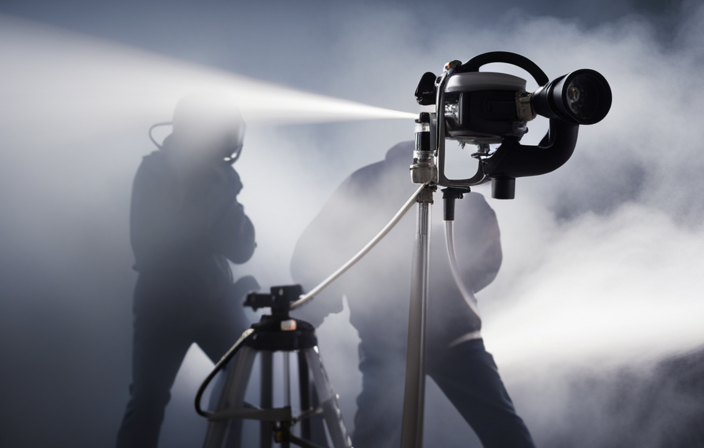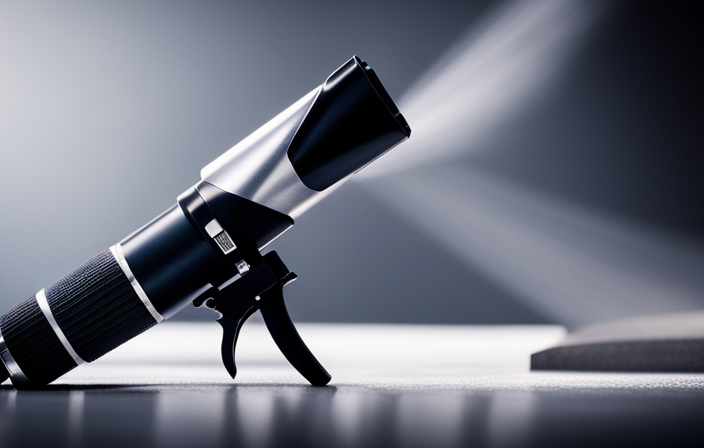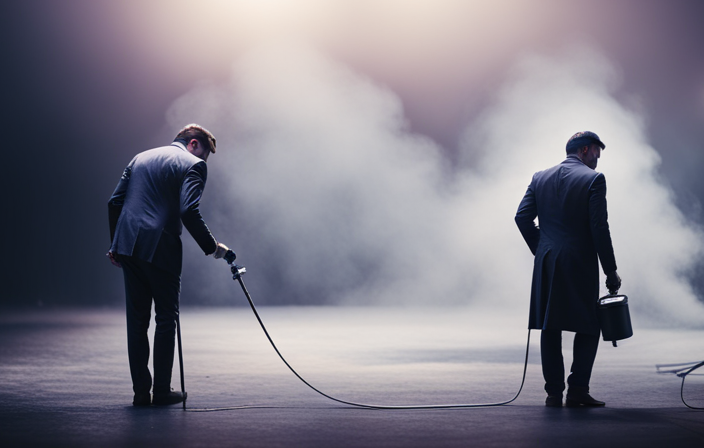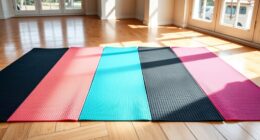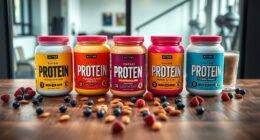Imagine a place where covering big spaces with paint is easy peasy, where every stroke of a brush wraps around a huge area effortlessly. That’s exactly what an **airless paint sprayer** gives you. Dive into the magic of painting with ease!
As a professional painter with years of experience, I can confidently say that airless paint sprayers are a game-changer in the industry. These powerful tools work by pumping paint at high pressure through a nozzle, creating a fine mist that evenly coats surfaces without the need for compressed air.
In this article, I will guide you through the ins and outs of airless paint sprayers, discussing their benefits, drawbacks, and the factors to consider when choosing one. I will also provide you with essential tips and safety precautions to ensure a successful painting experience.
So, whether you’re a DIY enthusiast or a professional painter, join me as we explore the world of airless paint sprayers and discover if they are the right choice for you.
Key Takeaways
- Airless paint sprayers are powerful tools that pump paint at high pressure for even coating, saving time and energy in the painting industry.
- They offer advantages such as the ability to cover large areas quickly and efficiently, the ability to create a thicker coat of paint with a smooth finish, and versatility for various surfaces and materials.
- However, they have drawbacks such as being more difficult to use and producing more overspray compared to traditional painting methods, which can contribute to air pollution.
- When choosing an airless paint sprayer, factors to consider include the power source, spray tip size, maximum pressure, paint capacity, and the reputation and reliability of the brand and model.
How Does an Airless Paint Sprayer Work?
Imagine yourself holding an airless paint sprayer, feeling the powerful burst of paint as it’s propelled out of the nozzle without the need for air. An airless paint sprayer works by using a high-pressure pump to force paint through a small opening at the tip of the nozzle. This creates a fine mist of paint particles that evenly coat the surface being painted.
The main advantage of using an airless paint sprayer is its ability to cover large areas quickly and efficiently. It also allows for a thicker coat of paint to be applied, resulting in a smooth finish. However, there are some disadvantages to consider. Airless sprayers can be more difficult to use than traditional paintbrushes or rollers, and they tend to produce more overspray.
Despite these drawbacks, the benefits of using an airless paint sprayer, such as time and energy savings, make it a popular choice for both professionals and DIY enthusiasts.
Benefits of Using an Airless Paint Sprayer
When it comes to painting projects, using an airless paint sprayer has been a game-changer for me. The first major benefit is the significant time-saving aspect. With its high-pressure system, the paint is evenly sprayed onto the surface, covering a larger area in a shorter period of time.
Additionally, the professional-looking finish achieved with an airless paint sprayer is unparalleled. The high-pressure application ensures smooth and even coats, eliminating streaks and brush marks.
Lastly, the versatility of an airless paint sprayer is impressive. It can be used on a wide range of surfaces and materials, from walls and ceilings to fences and furniture, making it a valuable tool for any painting project.
Time-saving
To truly grasp the time-saving power of an airless paint sprayer, picture yourself effortlessly gliding through your painting projects like a skilled conductor leading a symphony, effortlessly bringing vibrant colors to life in record time. With an airless paint sprayer, you can cut your painting time in half, if not more.
Here are some reasons why:
-
Faster Application: The high-pressure system of an airless paint sprayer allows you to cover large areas quickly and efficiently.
-
Reduced Preparation Time: Unlike traditional paintbrushes or rollers, an airless paint sprayer eliminates the need for time-consuming tasks like taping and cutting in.
-
Even Coating: The fine mist produced by the sprayer ensures a consistent and smooth application, saving you from having to go back and touch up uneven spots.
-
Versatility: Airless paint sprayers can handle a wide range of materials, from thin stains to thick latex paints.
-
Easy Cleanup: Unlike paintbrushes and rollers, airless paint sprayers are easy to clean, requiring minimal maintenance.
By harnessing the time-saving benefits of an airless paint sprayer, you can achieve a professional-looking finish without the hassle and time commitment of traditional painting methods.
Professional-looking finish
Achieve a polished and flawless appearance with the help of an airless paint sprayer’s ability to create a smooth and even coating. Using professional techniques, this paint sprayer ensures that every surface is covered with precision, resulting in a professional-looking finish.
The high-pressure spray of the airless paint sprayer atomizes the paint, breaking it down into tiny particles that evenly distribute across the surface, eliminating brush marks or roller lines. This method not only saves time but also guarantees a smooth and seamless finish, making it perfect for large-scale painting projects or intricate details.
With the airless paint sprayer, achieving smooth surfaces has never been easier. Transitioning into the next section, the versatility of this tool extends to different surfaces and materials, allowing for a wide range of painting possibilities.
Versatility for different surfaces and materials
With its ability to adapt to different surfaces and materials, this versatile tool opens up a world of painting possibilities. Whether you’re working on walls, ceilings, furniture, or even fences, an airless paint sprayer can handle it all.
The high-pressure system provides a consistent and even coat of paint, ensuring a professional-looking finish every time. From smooth surfaces like wood or metal to textured surfaces like stucco or brick, this tool can handle them all with ease.
Its versatility extends to various materials as well, allowing you to paint not only on traditional surfaces but also on unconventional ones like vinyl or plastic.
However, like any tool, there are drawbacks to using an airless paint sprayer that should be considered.
Drawbacks of Using an Airless Paint Sprayer
Despite their efficiency, airless paint sprayers can leave a splattered mess that resembles a chaotic Jackson Pollock painting. While these sprayers are incredibly versatile for different surfaces and materials, there are a few drawbacks to consider.
One major disadvantage is that airless paint sprayers tend to produce overspray, which can result in wasted paint and a messy work area. Additionally, the high pressure of the spray can cause the paint to bounce back, leading to uneven coverage and potential damage to nearby objects.
Another factor to consider is the environmental impact of airless paint sprayers. The overspray can release harmful volatile organic compounds (VOCs) into the air, contributing to air pollution. Therefore, it’s important to take precautions such as covering surrounding areas and using proper ventilation when using these sprayers.
When choosing an airless paint sprayer, it’s crucial to weigh these drawbacks alongside other factors to ensure the best choice for your painting needs.
Factors to Consider When Choosing an Airless Paint Sprayer
Now that we have discussed the drawbacks of using an airless paint sprayer, let’s move on to the factors to consider when choosing one. When it comes to investing in an airless paint sprayer, it is crucial to evaluate several key factors to ensure you make the right choice. Factors such as the power source, spray tip size, maximum pressure, and paint capacity should all be taken into account. Additionally, it is important to consider the reputation and reliability of the brand and model you are considering. Some of the best brands/models in the market include Graco Magnum X7, Wagner Control Pro 130, and Titan ControlMax 1700 Pro. These models offer excellent performance and durability. Now, let’s delve into some valuable tips for using an airless paint sprayer.
Tips for Using an Airless Paint Sprayer
To ensure smooth and efficient application, using an airless paint sprayer is like unleashing a powerful wave of color that effortlessly coats any surface. When using an airless paint sprayer, there are a few techniques that can help achieve the best results.
First, it’s important to maintain a consistent distance from the surface being painted, typically around 12 inches. This ensures an even coat without overspray. Additionally, moving the sprayer in a smooth, sweeping motion helps to avoid streaks or drips.
Troubleshooting airless paint sprayer issues can be done by checking for clogs in the nozzle or hose and ensuring proper pressure settings. By mastering these techniques and addressing any issues, you can achieve professional-looking results with an airless paint sprayer.
Transitioning to the next section, it’s important to compare airless paint sprayers to other painting methods.
Comparison of Airless Paint Sprayers vs. Other Painting Methods
When it comes to painting, there are various methods to choose from, each with its own set of pros and cons.
Traditional brushes and rollers offer a hands-on approach, allowing for precision and control, but can be time-consuming and result in brush strokes or roller marks.
On the other hand, HVLP (High Volume Low Pressure) sprayers offer a faster and more even application, but may require more skill to operate and can create overspray.
Understanding the advantages and disadvantages of each method is crucial in order to achieve the desired results.
Traditional brushes and rollers
If you want a faster and more efficient way to paint, try using an airless paint sprayer instead of traditional brushes and rollers. While traditional techniques using brushes and rollers have been the go-to method for years, they can be time-consuming and require a lot of effort.
With an airless paint sprayer, you can cover larger areas in less time, making it a great alternative tool for painting projects. The high-pressure system of the sprayer allows for a smooth and even application of paint, resulting in a professional-looking finish. Plus, the sprayer can handle a wide range of paints and coatings, making it versatile for various surfaces.
Transitioning into the next section about hvlp (high volume low pressure) sprayers, these tools offer another option for achieving a flawless paint job.
HVLP (High Volume Low Pressure) sprayers
The HVLP sprayers are like a magic wand for achieving a flawless and professional paint job. These sprayers use a high volume of air at a low pressure to atomize the paint, resulting in a fine mist that evenly coats the surface. One major benefit of HVLP sprayers is their ability to minimize overspray, which reduces paint waste and keeps the work area clean. Additionally, HVLP sprayers allow for greater control and precision, making it easier to navigate tricky areas and achieve smooth finishes. When compared to airless sprayers, HVLP sprayers are generally more suitable for smaller projects and detailed work. They are also easier to clean and maintain. However, airless sprayers are better suited for larger projects and can cover a larger area in a shorter amount of time. In the next section, we will discuss the pros and cons of each method without writing ‘step’.
Pros and cons of each method
One major advantage of HVLP sprayers is their ability to minimize overspray, resulting in less wasted paint and a cleaner work area. This is achieved by using a high volume of air at a low pressure, which allows for better control over the spray pattern. The spray pattern control feature enables painters to adjust the width and shape of the paint spray, making it ideal for intricate projects or areas that require precision. Additionally, HVLP sprayers are known for their paint overspray reduction capabilities, which means less paint particles are dispersed into the air, reducing the risk of respiratory issues and creating a healthier work environment. These benefits make HVLP sprayers a popular choice for applications such as furniture refinishing, automotive painting, and small-scale projects.
Moving on to common applications for airless paint sprayers…
Common Applications for Airless Paint Sprayers
When it comes to painting interior and exterior walls, furniture, and cabinets, as well as deck and fence staining, airless paint sprayers are my go-to choice. These versatile tools allow for a quick and even application of paint, ensuring a professional-looking finish every time.
With their high-pressure spray, they can easily cover large surfaces in a fraction of the time compared to traditional methods.
Interior and exterior walls
Transform your interior and exterior walls with an airless paint sprayer, effortlessly giving them a fresh and professional finish. This versatile tool is essential for anyone interested in interior design and staying up-to-date with paint color trends.
Here are five reasons why an airless paint sprayer is perfect for transforming your walls:
- Achieve smooth and even coverage, ensuring a flawless result.
- Save time and effort by covering large areas quickly and efficiently.
- Easily reach high ceilings or tight corners, ensuring every inch of your walls is painted.
- Control the spray pattern to create different textures and effects.
- Avoid brush or roller marks, giving your walls a seamless and professional look.
With your walls beautifully painted, it’s time to move on to another important aspect of your home: furniture and cabinets.
Furniture and cabinets
Revamp your furniture and cabinets effortlessly with the help of an airless paint sprayer, giving them a fresh and professional finish. When it comes to furniture restoration, spray painting techniques can make all the difference.
An airless paint sprayer allows for smooth and even application, ensuring that every nook and cranny of your furniture and cabinets receives a flawless coat of paint. The high-pressure system atomizes the paint, creating a fine mist that adheres perfectly to the surface. This not only saves you time and effort but also provides a more durable and long-lasting finish.
With the ability to adjust the spray pattern and flow rate, you can easily achieve the desired level of coverage and achieve professional-looking results.
Now, let’s transition to the next section, where we will discuss deck and fence staining, another area where an airless paint sprayer can come in handy.
Deck and fence staining
Deck and fence staining can be a breeze with the help of a handy tool like an airless paint sprayer. Proper preparation is key to achieving a smooth and even finish.
Before starting, make sure to clean the surface thoroughly and remove any loose or peeling paint. Sanding the wood will also help the stain adhere better.
When it comes to choosing the right stain color, consider the overall look you want to achieve and the natural color of the wood. Test different stains on a small, inconspicuous area to see how they look before committing to a whole deck or fence.
Once you’ve finished staining, it’s important to clean the airless paint sprayer properly and follow safety precautions to ensure a successful and accident-free painting experience.
Safety Precautions When Using an Airless Paint Sprayer
To ensure your safety when using an airless paint sprayer, keep in mind the old saying, ‘Better safe than sorry.’ Taking proper precautions and safety measures is crucial when operating this powerful tool.
First and foremost, always wear protective gear, including gloves, goggles, and a respirator, to shield yourself from paint fumes and potential splatters.
It is also important to work in a well-ventilated area to minimize the inhalation of paint particles.
Before starting, inspect the sprayer for any damage or leaks and follow the manufacturer’s instructions for setup and operation.
Additionally, be cautious of the high-pressure spray and ensure that bystanders and pets are a safe distance away.
By taking these safety precautions, you can confidently use an airless paint sprayer without compromising your well-being.
Now, let’s dive into the recommended airless paint sprayers on the market.
Recommended Airless Paint Sprayers on the Market
If you’re in need of a powerful tool for your painting projects, check out these top-notch airless paint sprayers on the market. These recommended airless paint sprayers are known for their exceptional performance and reliability.
Here are the top-rated airless sprayers that you should consider:
-
Graco Magnum X5: This sprayer is perfect for small to medium-sized projects and delivers consistent, professional results. It features a durable construction and easy setup, making it a favorite among DIY enthusiasts.
-
Wagner Control Pro 150: With its high-efficiency airless technology, this sprayer provides a smooth and even finish. It is ideal for both interior and exterior painting jobs and offers excellent control and precision.
-
Titan ControlMax 1700: This sprayer is designed for heavy-duty use and can handle large-scale projects with ease. It offers superior spraying power and coverage, making it a great choice for professional painters.
In conclusion, if you’re looking for a reliable and efficient painting tool, an airless paint sprayer is definitely worth considering.
Conclusion: Is an Airless Paint Sprayer Right for You?
So, are you ready to revolutionize your painting projects with the power and precision of an airless paint sprayer? Let’s weigh the pros and cons of this innovative tool.
One major advantage of airless paint sprayers is their ability to provide a smooth, even finish in a fraction of the time compared to traditional methods. With their high-pressure system, they can cover large areas quickly, saving you time and effort. Additionally, airless sprayers are versatile and can handle a variety of coatings, including thick paints and stains.
However, it’s important to note that airless sprayers can be more expensive and can result in more overspray compared to traditional methods. It’s also crucial to properly clean and maintain the sprayer to ensure optimal performance.
Overall, if you’re looking for efficiency and a professional finish, an airless paint sprayer may be the right choice for you.
Frequently Asked Questions
Can an airless paint sprayer be used for both indoor and outdoor projects?
Yes, an airless paint sprayer can be used for both indoor and outdoor painting projects. It is an efficient and versatile tool that provides a smooth and even finish on various surfaces, making it perfect for any painting job.
What types of paint can be used with an airless paint sprayer?
With an airless paint sprayer, you can use a variety of paint types, including latex, oil-based, and acrylic. The benefits of airless sprayers include faster and more efficient coverage, as well as a smoother finish.
How long does it typically take to clean an airless paint sprayer after use?
After use, it typically takes about 15-30 minutes to properly maintain and clean an airless paint sprayer. To avoid common mistakes, make sure to thoroughly flush the system, remove any remaining paint, and clean all the components, including the gun and nozzle.
Can an airless paint sprayer be used on textured surfaces?
Oh boy, using an airless paint sprayer on textured surfaces can be quite the adventure! The advantages include faster coverage, but watch out for uneven application and potential paint build-up.
Are airless paint sprayers suitable for DIY projects or are they primarily used by professionals?
Airless paint sprayers are suitable for both DIY projects and professional use. They offer precise and efficient paint application, making them a valuable tool for any painting job, regardless of the scale or level of expertise.
Conclusion
So, after all this information, you’re probably wondering if an airless paint sprayer is right for you. Well, let me tell you, my friend, if you enjoy spending hours painstakingly brushing on paint and getting those pesky brush strokes just right, then an airless paint sprayer isn’t for you. But if you’re like me and value time, efficiency, and a smooth, professional finish, then go ahead and treat yourself to the wonders of an airless paint sprayer. Trust me, you won’t be disappointed.
Happy painting!
